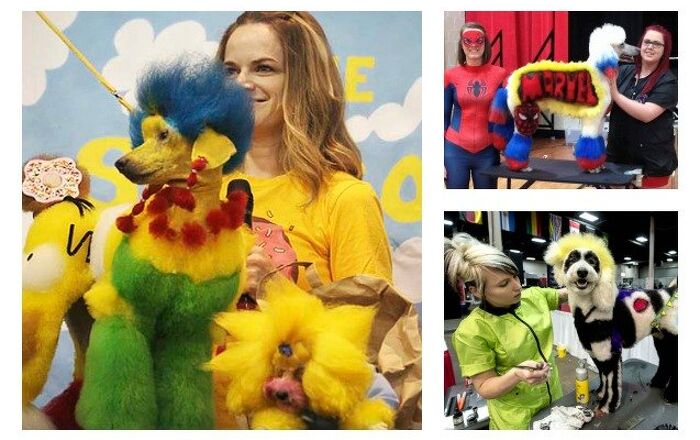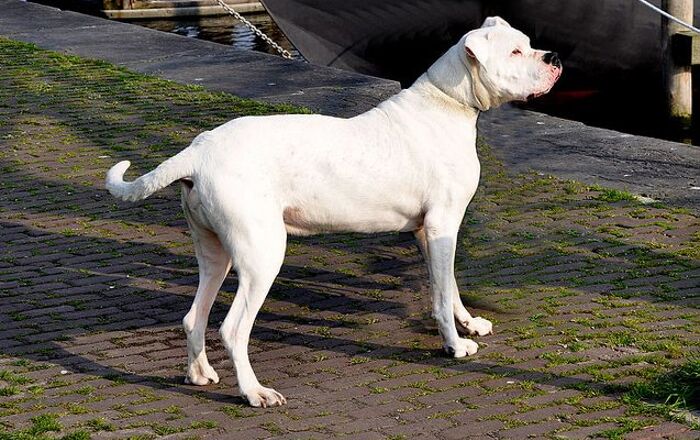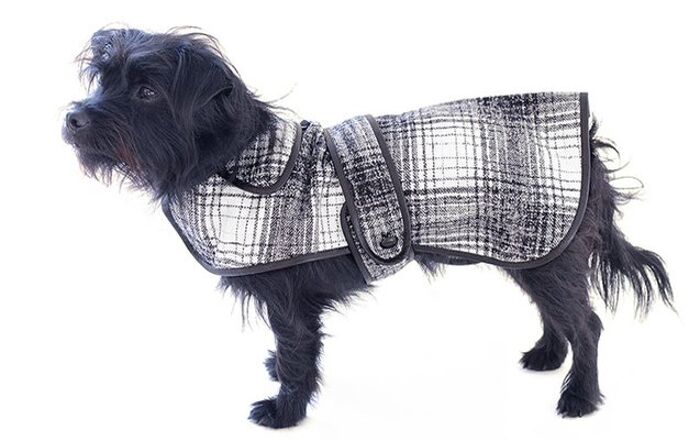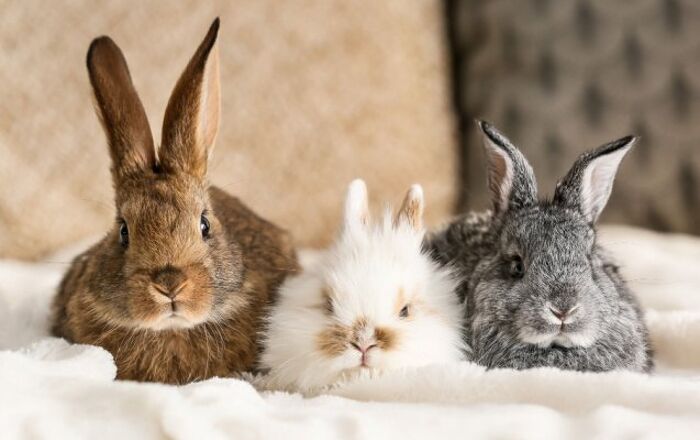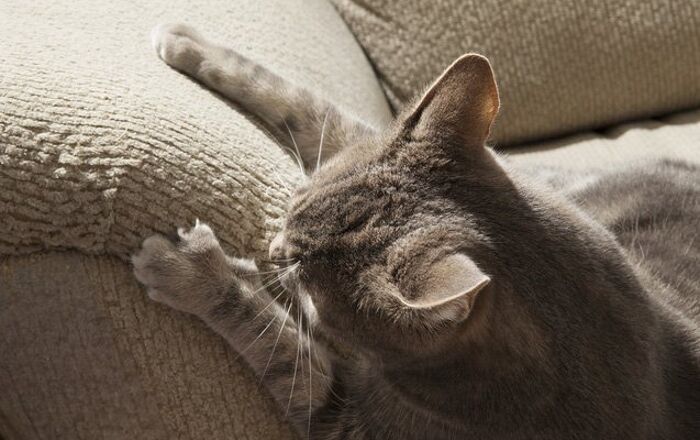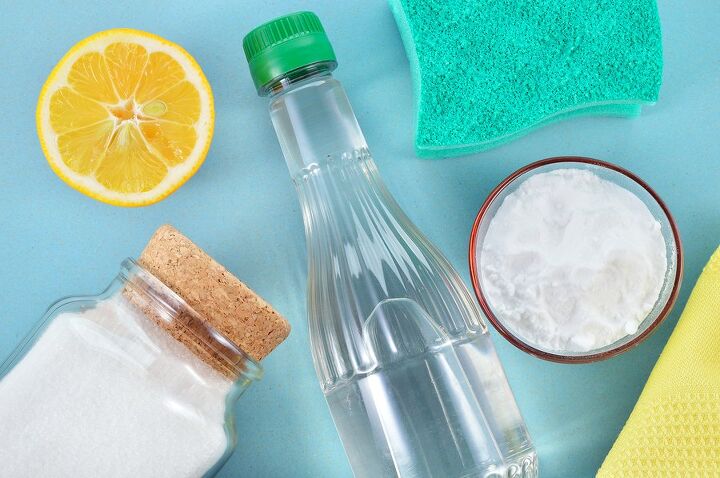
If the thought of chemicals leaves you scratching your head for eco-friendly flea remedies, why not do it yourself? Try these DIY flea busters that are all-natural.
Fleas can be a dog owner’s worst nightmare but, unfortunately, most dog owners have to deal with them at some point. The problem with fleas is that they are tiny and sometimes hard to detect. By the time you actually spot a flea or notice your dog scratching more than usual, they have probably reproduced to form a full-out infestation. If you don’t like the idea of using chemical flea treatments, consider some of these DIY natural flea remedies.
Although commercial flea remedies often get the job done, sometimes they leave pet owners wondering if they might be worth the risk. Commercial flea treatments are often laden with harsh chemicals that could be toxic for your pet and for your children – do you really want to expose your family to those toxins? If you want to get rid of fleas fast without the chemicals, try one of the eight DIY natural flea remedies below:
Soap Flea Trap
Catch fleas by filling bowls with warm water to the brim then adding a capful of dishwasher liquid. Place the bowls under your bed, on the floor, in areas where fleas are a problem then light a tea candle and place it nearby. The fleas will be attracted to the light and warmth but will drown in the soapy water.
Table Salt Remedy
Simply fill a shaker bottle with fine sea salt and sprinkle it over your carpet. Let the salt sit for 12 to 24 hours then vacuum it up and throw away the bag.
Homemade Herbal Spray
Combine one gallon of white vinegar with one-half gallon of water and 2 cups of fresh lemon juice in a large bucket. Stir in 1 cup of witch hazel then pour the mixture into a hand sprayer. Spray the liquid over your carpets, pet bedding, furniture, and other areas once a day for up to 7 days then repeat once a week for the rest of flea season.
Related:
6 Natural Flea Remedies For Dogs
Diatomaceous Earth
Fleas have a protective coating on their bodies that diatomaceous earth will damage, leaving the fleas to dry out and die. Sprinkle diatomaceous earth on your carpet, pet bedding, and other areas affected by fleas then let it sit for 12 to 24 hours before vacuuming it up and discarding the bag.
Pennyroyal Leaves
European pennyroyal and American pennyroyal (not the kind that belongs to the mint family) are safe for pets and effective flea deterrents. Crush a handful of fresh pennyroyal leaves in a mortar and pestle into a paste then tie it up in a piece of cheesecloth. Hang the packet in a room where fleas are a problem.
Lemon Flea Spray
To make your own flea spray, slice up six fresh lemons and place the slices in a large bowl. Add a handful of chopped rosemary then add 2 liters of boiling water. Add 4 drops of geranium essential oil then cover the bowl and let it steep overnight. Strain the liquid then pour it into a spray bottle and apply it to bedding, furniture, and other areas where fleas are a problem.
Rosemary Flea Powder
Combine equal parts of dried rosemary, fennel, peppermint, rue, and wormwood in a coffee grinder. Grind up the ingredients into a fine powder then sprinkle it on your carpet, furniture, pet bedding, and other surfaces to repel fleas.
Essential Oil Floor Cleaner
First, vacuum your entire house and immediately throw away the vacuum bag. Place 1 gallon of warm water in your mop bucket then add 20 drops of citronella essential oil, 10 drops of tea tree oil, 10 drops of lemongrass oil, and 5 drops of geranium oil. Mop your house with water once a day. After 7 days, mop once a week to maintain control.
Related:
My Dog Has Fleas – What Do I Do?
Often considered to be a ‘miracle solution’, here’s yet another reason to pull your bottle of apple cider vinegar out of the pantry. Combine 6 cups of apple cider vinegar, 4 cups of water, and a dash of sea salt, mixing it thoroughly. Pour this mixture into a spray bottle and spray it directly all over the carpet, furniture, pet bedding, and more. Apple cider vinegar has an alkalizing effect, naturally balancing the pH level on these surfaces and creating an environment in which fleas are unable to survive.
Make sure that the diatomaceous earth you are purchasing is labeled as food grade. The filter-grade version can be toxic to your pets. You should use caution even when using the food-grade version as it can be a lung or nasal irritant if your pet inhales it. While putting it down, keep your pet safely contained in another room.
You may have heard of sprinkling baking soda on your carpets and furniture as a way to combat undesirable smells. While this is true, it can also be an easy and low-cost way of dealing with fleas in your home. Sprinkle the baking soda all over the carpet, being generous with the amount that you’re using. With a broom, sweep the area side to side to help the baking soda reach down into the carpet fibers.
Leave the baking soda in place overnight. During this time, it will absorb any moisture that surrounds it, dehydrating any fleas and their eggs that may be in the area. The next morning, vacuum thoroughly and carefully dispose of the contents of your vacuum.
Also known as hedge apples or Osage oranges, horse apples are round, bumpy fruit that can be found across Canada and the United States. While this fruit isn’t one that is normally eaten by people, it can be useful when it comes to getting rid of fleas in your home. If you have a horse apple tree near your home, pick green horse apples and cut them into halves to expose the flesh of the fruit. Place them around in every room that currently has a flea infestation and leave them there for two months. The fruits will dry out during this time but, at the same time, they will also eliminate any fleas that have taken up residence in the area.
Take two squares of fabric approximately 2 to 6 inches and sew them together on all but one side to create a fabric sachet. Fill your DIY sachet with cedar cheeps, lemon peel, and dried lavender buds, leaving enough space at the top to tie it off with a ribbon or sew the side shut. Place the sachet in areas that are attractive to fleas including under your pet’s bedding or tucked into the cushions of your couch.
This one isn’t a natural treatment for fleas as much as it is a repellent. If you’re concerned about fleas in the area of your home or know that they have been seen in your neighborhood, you can bring in houseplants that will work to keep the fleas at bay. Plants that have an undesirable odor for fleas include lavender, chrysanthemums, pennyroyal, and spearmint.
By utilizing one of the DIY natural flea remedies above you can help rid your home of a flea infestation without exposing your family to harsh chemicals. Once you have your flea problem taken care of, be sure to use topical flea medications or other natural remedies to keep the fleas out once and for all.



